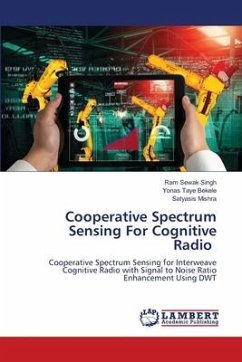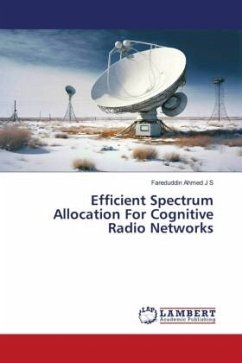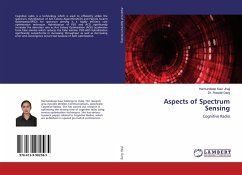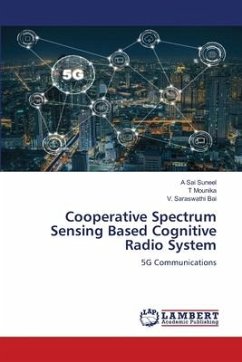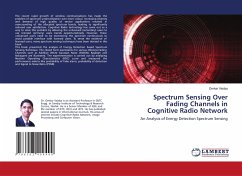
Analyzing Spectrum Sensing Techniques in Cognitive Radio using MATLAB
Versandkostenfrei!
Versandfertig in 6-10 Tagen
29,99 €
inkl. MwSt.

PAYBACK Punkte
15 °P sammeln!
Most of the primary spectrum is already assigned, so it becomes very difficult to find spectrum for either new services or expanding existing services. At Present government policies do not allow the access of licensed spectrum by unlicensed users, consists them instead to use several heavily populated, interference-prone frequency bands. As the result, there is huge spectrum scarcity problem in certain bands. In particular, if the radio spectrum is scanned, including the revenue-rich urban areas, it can be seen that some frequency bands in the spectrum are unoccupied for some of the time and ...
Most of the primary spectrum is already assigned, so it becomes very difficult to find spectrum for either new services or expanding existing services. At Present government policies do not allow the access of licensed spectrum by unlicensed users, consists them instead to use several heavily populated, interference-prone frequency bands. As the result, there is huge spectrum scarcity problem in certain bands. In particular, if the radio spectrum is scanned, including the revenue-rich urban areas, it can be seen that some frequency bands in the spectrum are unoccupied for some of the time and many frequencies band are only partially occupied, whereas the remaining frequency bands are heavily used. We propose a new algorithm named CSAC. CSAC is the first one in the literature that exploits the only available channels in designing CH sequences while providing guaranteed rendezvous.



